Period Head Coverings
Or alternately, What Hat Goes with My Outfit?
13th Century
This post comes from a class I taught. It evolved from me standing in front of the mirror, event after event, trying to figure out what to wear on my head that would match the era of the outfit I was wearing. After doing a little research on what in general was worn each century, I was able to decide more quickly which hats went with which outfits. Maybe other folks have the same problem, I thought. Trying to use period sources rather than general costume books, I came up with this. I hope it helps you in your quest to appear more historically dressed.
13th Century
For Women
Headgear becomes much more complex for women this century. The up side is that there is far more variety to what we can wear. I’ll save most of the period pictures after the explanations of what everything is.
- Braids
- The simple braids are still around. Generally you’ll see them with one hanging on each side of the head.
- Veil
- We have the simple veil, although it is mainly seen worn by the lower classes.
- There are loads of sites that show you how to make and wear a veil. Essentially, cut a circle, oval, rectangle or square. If you can, hand sew the edges with a rolled hem. Then you’re done. When I made my first veils, I couldn’t get the size right. Finally, I took some cotton muslin I bought on sale and made 3 or 4 mock-up veils. I thought the circle and the oval looked best on me. I made a few of different sizes – smaller for day use and larger for court garb.
- Here’s one site, but it adds a band around the head, which is practical, but not necessary. http://costumeholic.blogspot.com/2010/04/making-and-wearing-medieval-veil.html
- Barbette and Filet
- Many of the complex headgear from this century uses the barbette and fillet.
- Barbette: a band of cloth that goes around the head and under the chin. It could be thin (~1”) or a wide band.
- Fillet (aka coffee filter hat) was like a fabric crown. It could be tall or short.
- The barbette and fillet are often seen together, but they can be worn in some styles separately.
- Caitlin, from Caitlin’s Clothing, has a simple method of making a barbette and fillet.
http://www.caitlinsclothing.com/cyclas.html#BARBETTE,%20FILLET%20AND%20CRESPINE - The picture to the below has the lady wearing a coif under her barbette and fillet.
- Crespinette
- Barbette worn with a Crown or Coronet
- Barbette or Filet with a Veil
- A veil can be held more securely on the head with a barbette or filet by themselves – you don’t always have to wear both.
- Personally, I don’t care for the barbette. It covers my ears and makes it even harder for my half-deaf self to hear. I do, however, like the filet with a veil. It holds the veil on nicely and is much more comfortable. Either way is perfectly fine.
- In this drawing the lady is wearing a barbette with a veil and a crown.
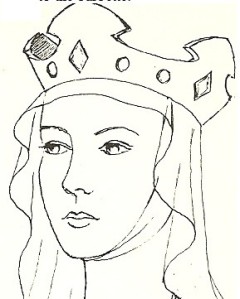
- Veil and Wimple
- This century sees a rise in the popularity of the wimple – the drape-like thing that goes under the chin.
- The wimple is simply a rectangle of cloth. It’s pinned to the filet. Then the veil is set on top of the filet/wimple combo.
- The veil can be pinned to the filet as well or simply held down with a coronet or crown.
- Here is a simple set of veil and wimple instructions http://www.rosieandglenn.co.uk/TheLibrary/Costume/CnTGuides/HowToWear/HTWToque.htm
- Although you can’t see it in this drawing, she is wearing a filet (and probably a barbette) under the veil and wimple.
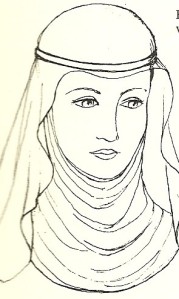
- Cap
- Possibly the most comfortable 13th and 14th century headgear is the cap, which is also called St. Birgitta’s Huva (I have another blog post solely on how to make one).
- It’s a loose coif with one long continuous strap attached at the front bottom edges. The strap is then looped twice around the head to hold it in place.
- A link to my explanation (I have many other links to other explanations too):
https://maniacalmedievalist.wordpress.com/2012/10/01/st-birgittas-huva-cap/ 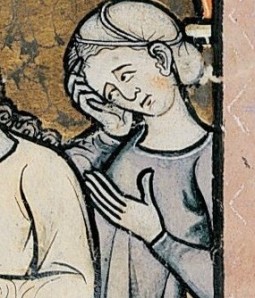
Period pictures of these styles
-
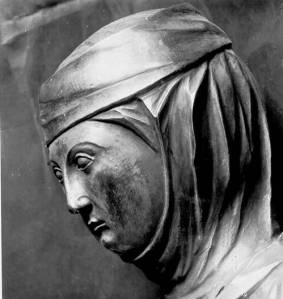
-
- Elisabeth Church, Marburg, Germany
c. 1235
Veil tucked around head and under wimple. Both under a large fillet. -
For Men
- Coif
- The coif is still around. One difference is that it is no longer a rectangle folded, sewn up the back and then shaped.
- You can see a center seam indicating that it is now two separate pieces sewn together.
- It can still be worn by itself or under a hood or hat.
- Here’s a simple arming cap pattern you can use for a simple coif. Just don’t stuff it.
http://www.arador.com/articles/armingcap.html
- Hoods
- The hood is starting to evolve in what will later be know as the liripipe.
- But for now, it only has a small tail or tippet.
- Simple hood tutorial (remember to keep the tail small):
http://tutorials.abbott.me.uk/home/hood - It can still be a loose hood that slips on over the head.

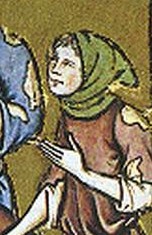
- Or it can made more form fitting by using buttons down the front, such as the one below

- Straw Hats
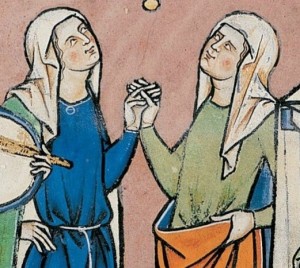
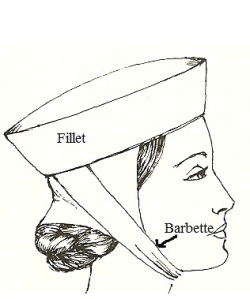
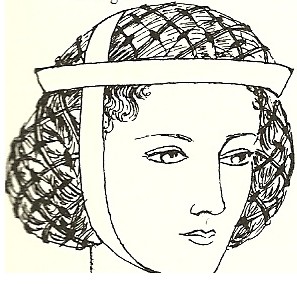
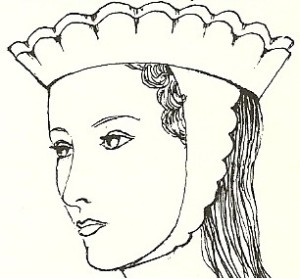
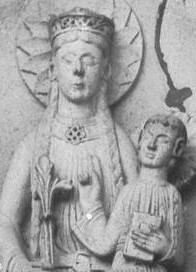

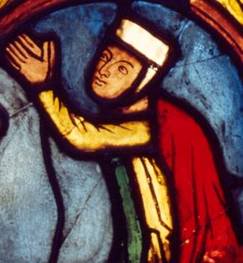
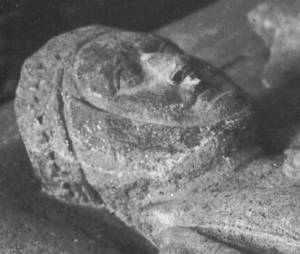
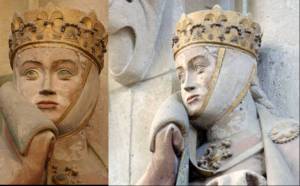
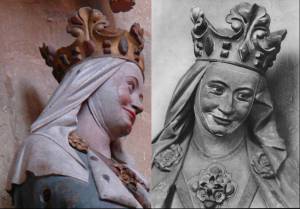


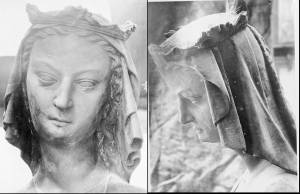
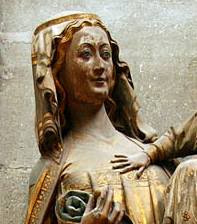
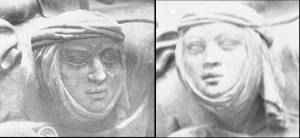
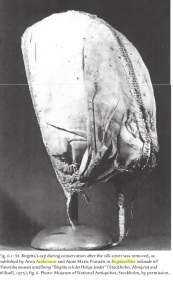
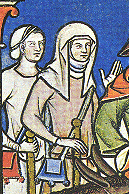
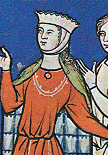
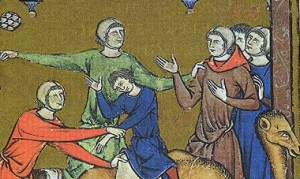

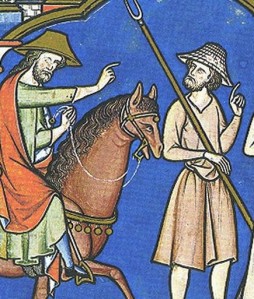

[…] https://maniacalmedievalist.wordpress.com/2012/10/10/on-yer-heade-part-ii/ […]
Nice work! I wonder where the buttoned hood comes from – do you happen to know the source?